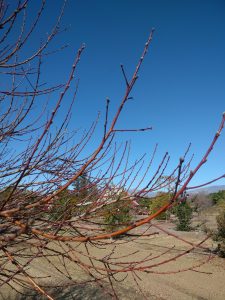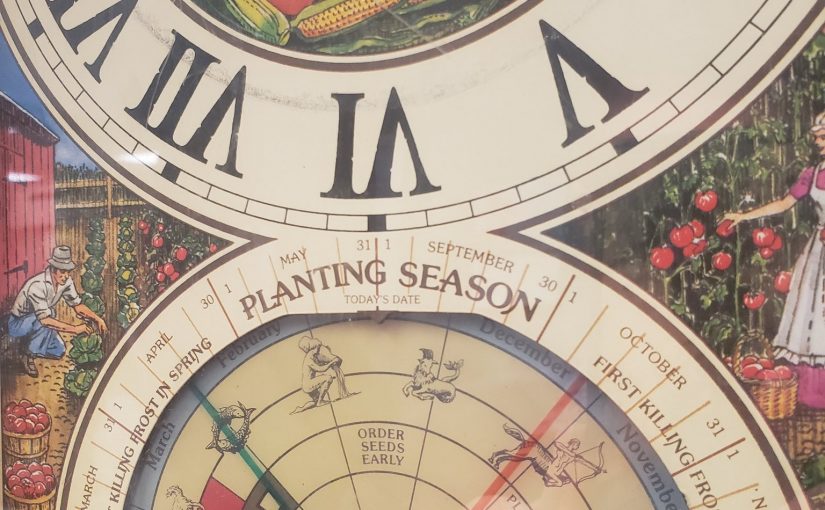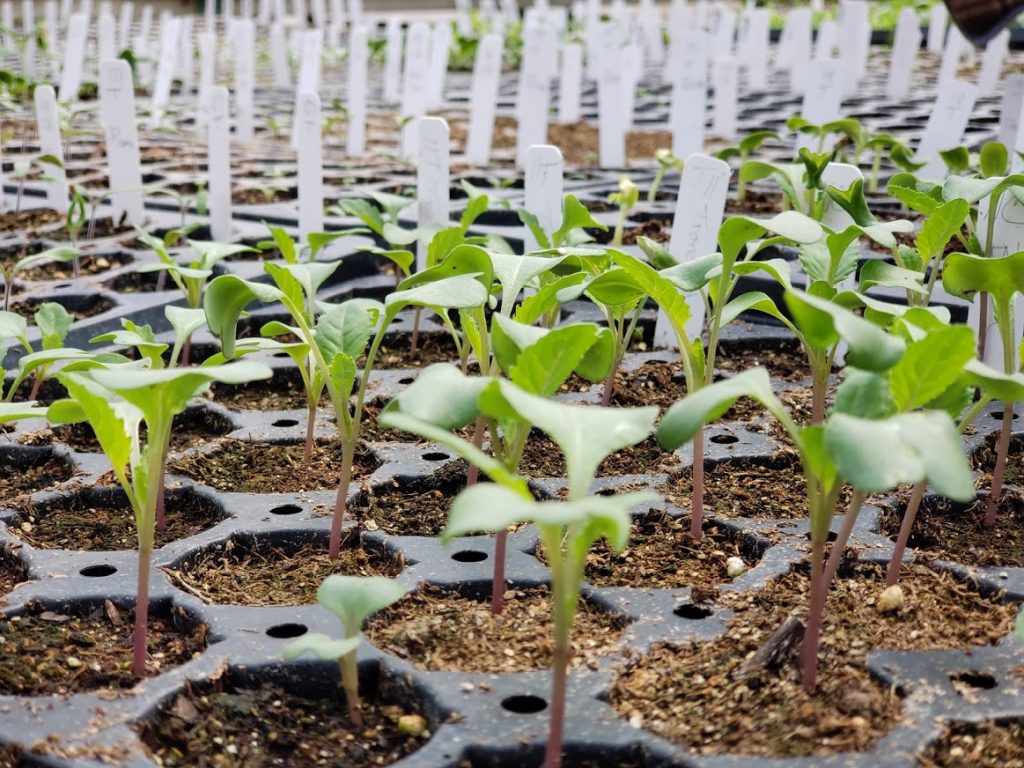Last week I helped to train Master Gardeners about pruning fruit trees. January and February are the months that we recommend fruit tree pruning in Southern California. In colder climates, pruning may not occur until later when freezing temperatures are minimized and there is less chance of damage to new growth. While trees don’t “need” pruning to bear fruit, pruning practices can enhance fruit production, promote earlier fruiting bearing buds, and increase fruit quality if done in an informed way. In many respects, modern fruit trees have been bred for big fruit, and pruning might need to be done to prevent limb breakage, reduce the number of fruit and position it in the tree fore ease of harvest. Misinformed pruning can lead to disease or loss of bearing wood. “Fruit tree” is a broad category, but for this blog, I am referring to deciduous trees (not subtropicals such as citrus, avocado, mango etc.). Two main categories are common: Pome fruits such as apples and pears and Stone fruits such as cherries, plums, apricots, peaches, almonds and pluots.
The first thing to figure out when pruning any tree grown for fruit production is where the fruit will be formed. This requires examining and understanding buds, twigs and the age of growth that is produced. Second we need to understand the tree’s responses to pruning and how that will affect future fruit production. Finally an understanding of negative consequences of pruning is essential.


Why prune you ask if trees will produce without pruning? Pruning shapes a tree, and helps to create fruiting buds that are conveniently placed for harvest-this keeps fruit pickable with less time on ladders. Pruning gives an opportunity to remove fruiting buds thereby invigorating remaining buds and increasing size and quality of the fruit that will form with less fruit thinning later. Pruning also gives an opportunity to remove diseased, damaged, tangled or infested branches. While various training styles can be used for structural pruning of young fruit trees the open vase or modefied central leader systems are preferred and descriptions of them can be found in extension leaflets. For my own trees I usually do not prune them the first year after planting in order to encourage a stronger root system. In the second and third years I pick scaffold branches or train branches on the central leader.
Fruit is produced on various aged twigs or branches depending on tree species. Peaches produce fruit on growth from the previous year or one year old wood. Since peaches grow vigorously fruiting wood ends up on the outside of a tree. Heading back (or heading) cuts (reducing last year’s branches by at least half their length) will remove ½ the fruit and stimulate buds lower in the tree that will make more fruiting wood. For this reason peaches are usually pruned “hard” to stimulate maximum amounts of fresh fruiting wood. Apples, Pears, Plums, Cherries and Apricots produce most of their fruit on small side branches called spurs. Apples and Pears may also produce fruit from the terminal bud.
Young trees often make many long whips and these are usually headed back (heading cuts remove the terminal bud) to stimulate spurs in the following years. Once the overall shape and size of the trees are set, less pruning is required as spurs may produce fruit over decades of time. As trees mature spurs build up so removing densely clustered spurs on mature trees with thinning cuts (removing an entire branch, spur or twig) will increase the size and quality of fruit formed on the remaining spurs.
Pruning is often used on newly planted trees to form the structure of the tree. When forming the branch structure do no indiscriminately head back every branch as this will stop the growth of the branch that is headed. New growth will only resume from buds that are released to grow. Think carefully about what you want to grow and what you want to slow-down in growth. Pruning is always a growth retarding practice. Branches are best spaced up and down and around a central leader. In other training systems for stone fruits one heading cut when the tree is just a whip will create an open vase shape where all the branches arise from a single point on the trunk. While this is considered a branch defect in shade trees, it is a convenient training system for fruit trees if you don’t let the tree get too large and manage the fruit loads that are produced. Trees trained to a modified open center where branches are spaced on a central leader have stronger branch attachments and can bear greater fruit.

As trees age and grow they require regular training with heading cuts to shorten vigorous branches of peaches or thinning cuts to remove whips, water sprouts or other unwanted branches. Be careful not to over-prune especially in summer or sunburn can result. When fruit sets in the spring or early summer it can be thinned by hand. This form of pruning will increase size of the remaining fruit and quality. Summer pruning is sometimes practiced on very vigorous trees to slow their growth and invigorate buds for the following spring. Prune with care in the summer espeically on green barked trees like apple and pears to avoid sunburn.


